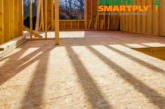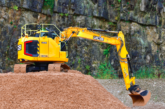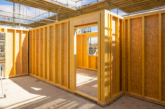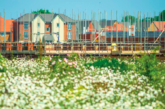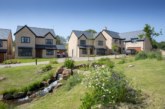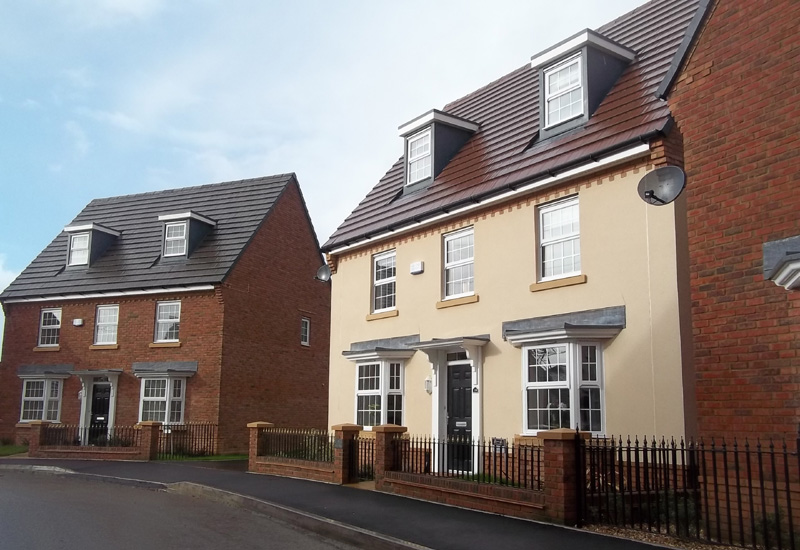
NHBC Standards Manager Paul Cribbens explains the latest set of important changes featured in the new NHBC Standards 2017.
Supporting house builders to raise the standard of new homes built across the UK is paramount to our mission at NHBC, alongside offering warranty protection to the homeowners who live in them.
Throughout the recent period of new home growth, our focus has remained firmly on helping the industry to maintain and improve construction quality standards. Indeed, this year we have re-shaped our inspection regime, introducing Consultative Inspections and Construction Quality Reviews to help us identify issues before they arise.
Following the introduction of the new look Standards for 2016, including the innovative use of technology to make the Standards more accessible and engaging than ever before, we now welcome Standards 2017, which includes a number of important technical updates and revisions, including the new Chapter 6.11 Render and rendering systems.
Coming into effect on 1 January, Standards 2017 contains new or revised guidance in a number of areas, including;
Chapter 3.3 Timber preservation (natural solid timber):
- Table 1 has been updated to recognise the use of water-based organic preservative as an acceptable timber treatment.
Chapter 5.4 Waterproofing of basements and other below ground structures:
- Helping industry to get this critical part of the build right, and reduce the significant rate of failure identified through our claims activities, remains one of our top priorities.
- The introduction of Chapter 5.4 marked a significant step in this campaign, helping to drive standards and reduce defects.
- Recognising the marked change in the application of waterproofing that the introduction of Chapter 5.4 initiated, and to help provide further clarity on what is required to comply, a number of minor updates have been made to this chapter.
 Chapter 6.11 Render and rendering systems:
Chapter 6.11 Render and rendering systems:
- Standards 2017 includes the launch of a new chapter which will set benchmark standards and provide helpful guidance for the application of render and rendering systems. The guidance covers a number of technical issues including, mix design, compatibility between render and its backing, accommodation of movement and weather conditions at the time of application.
Chapter 7.1 Flat roofs and balconies:
- For many years NHBC Standards have led the way in ensuring that balconies are only constructed with suitably durable materials. Further recognising the importance of getting this right, revised guidance for the use of timber in balcony constructions is introduced.
Chapter 7.2 Pitched roofs:
- In addition to the current guidance in NHBC Standards, supporting documents to building regulations and other authoritative documents, Standards 2017 includes an option for fixing lateral restraint straps to longitudinal binders.
- A number of smaller amendments have been made to ensure that the chapter is consistent and in alignment with the latest version of BS 5534.
Chapter 6.9 Curtain walling and cladding:
- Stone veneer cladding systems come in a number of forms. Typically they are either natural or reconstituted stone. They can either be directly applied to masonry substrates with mechanical fixings or adhesive, or applied as a slip system on a backing board.
- NHBC has noticed an increased use of these products recently, and whilst most manufacturers can verify the likely performance of their systems, there are others that can’t.
- Standards 2017 introduces guidance that will help to ensure that only suitable systems with verified performance are used in the construction of homes with NHBC warranty.
 Chapter 8.1 Internal services:
Chapter 8.1 Internal services:
- NHBC’s technical team have witnessed a number of designs where ventilation terminals have been concealed behind rainscreen cladding panels. This has led to questions about the performance of the ventilation system and durability of surrounding materials.
- To address this, Standards 2017 contains guidance that makes it clear that extract terminals from ventilation systems should discharge to open air.
Chapter 10.2 Drives, paths and landscaping:
Also included in the new Standards is guidance for the preparation of garden areas. Recent weather conditions have resulted in a noticeable increase in gardens suffering from waterlogging.
- Whilst it may not be possible to prevent waterlogging to the whole garden area, particularly where the natural ground conditions are susceptible to retaining water, construction activities can compact ground, increasing the possibility of waterlogging.
- The guidance for the preparation of garden areas found in Clauses 10.2.8 and 10.2.9 has been updated and includes new guidance to ensure that appropriate action, such as rotavating, is undertaken to restore the drainage characteristics of soil that has been compacted during construction.
By continuing to work with the industry to develop proven practical guidance that address technical issues to help prevent defects, we are confident that NHBC Standards will continue to support builders and developers in the delivery of high quality new homes.

